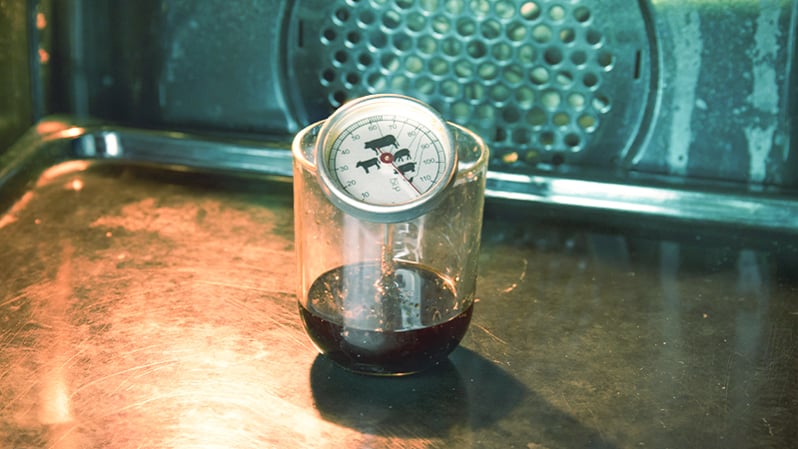“Decarb” is one of the first terms you hear when you decide to get more serious about weed than simply finding the best place to buy an eighth.
“That flower isn’t going to get you high unless you decarb it.”
If all you do is smoke, you don’t have to worry about decarbing cannabis. The flower is automatically decarbed when it’s burned or vaped.
It becomes an issue, though, if you plan on processing your bud to make products like oils, tinctures or edibles. In those cases, the common wisdom is correct: you won’t get high until you decarb it first.
What is Decarboxylation, and Why is it Important?
It’s commonly believed that cannabis contains both THC and CBD. That’s not actually true.
Cannabis flowers contain THCA and CBDA, which are precursors to the better-known cannabinoids responsible for pot’s psychoactive and medicinal properties. In order for THCA and CBDA to be turned into THC and CBD, respectively, they must be converted by having one of the carboxylic acid groups removed from their molecular makeup.
That removal process, as you may have guessed, is called decarbing (which stands for decarboxylation). Decarbing “activates” the THC and CBD in weed; it occurs when the flower is heated or burned – which is why you don’t have to bother with decarbing when you smoke or vape pot. It happens naturally.
When you want to use marijuana for some other purpose, though, it must be decarbed first. Otherwise, its THC and CBD aren’t activated, and there will be virtually no medical benefit and no high when you consume it. As one example, you can’t buy some bud, blend it into a smoothie and expect to get baked. Unless you’ve decarbed it first, you may not even feel a slight buzz.
(Some people believe you don’t have to decarb pot if you’re going to be using it in a baked product, like brownies. That’s somewhat true; you don’t have to. But lab tests show that only some of the THC and CBD is activated when you bake raw cannabis in food. To reach full potency and realize the full benefits, always decarb first.)
So that’s what decarbing is. Here’s how to do it.
How to Decarboxylate Cannabis

In the Oven
The simplest way to decarb your weed is to put it into the oven.
You have to be careful with the temperature, though, for several reasons. Once the temperature goes over 300° you risk damaging the integrity of the cannabinoids, which obviously is not desirable. But those higher temperatures also can compromise the terpenes in cannabis, the oils responsible for pot’s flavor and aroma (and according to many scientists, possibly responsible for some of the psychoactive and medical effects as well). Once terpenes are exposed to high temperatures they can evaporate, leaving the cannabis tasting and smelling bad.
That means you want a temperature well under 300° for decarbing. The best choice is somewhere between 220° and 240°, depending on how hot your oven runs. Lower and slower is better when it comes to decarbing, so start at 220° and adjust on future batches if necessary.
You want the weed to brown slowly without burning. If it’s browning too fast or starting to burn, turn the heat down. Decarbing begins after about half-an-hour at 220°, but the entire process can take longer; 45 minutes is a good amount of time for your first batch.
Here’s the actual procedure to follow.
- Crumple a large piece of aluminum foil (you can use parchment paper as well) and place it on top of an oven-safe baking sheet.
- Break your flower into small pieces, each about the size of a grain of rice, and spread it out on the foil. Don’t grind it finely, because that will make it more likely to burn.
- Loosely cover the foil and pot with a second piece of foil (or parchment), and bake at 220° for 45 minutes. When it’s golden brown in color, it’s done.
- Cool and store in an air-tight container. It can now be ground finely for use in recipes if desired.
That’s all there is to it.
This simple method of decarbing may smell up your kitchen and oven more than you’d like. If you want to reduce the odor, there are ways to do that.
Using a Glass Jar
If you take your small bud pieces and heat them in a sealed jar (like a mason jar), most of the odor will stay inside the jar instead of spreading throughout your house. This method also helps keep the pot from burning and keeps the flavor and aroma inside the jar, a great benefit if you want to make an infusion later on.
- Break your flower into small pieces, each about the size of a grain of rice. Don’t grind it finely, because that will make it more likely to burn.
- Put the weed into your jar and lightly screw on the lid.
- Spread a damp towel on an oven-safe baking sheet, put the jar on top of it, and bake at 220°. Open the oven and shake the jar every 10-15 minutes to make sure the flower heats evenly.
- After an hour, remove the jar, shake once more, and let cool for another hour.
- The decarbed pot is ready for use, or for storage. It can now be ground finely for use in recipes if desired.
Other Decarbing Methods
If you’re already a whiz in the kitchen or are ready to layout some bucks, there are other methods you can use to decarb your cannabis.
- A sous vide cooker (or immersion circulator) is perfect for decarbing, since the whole point of sous vide is to maintain an exact temperature for a long period of time. If using this method, you should pre-grind the weed since there’s no danger of it overheating or burning. Set the temperature at 205° and cook for 90 minutes.
- Decarboxylator machines sold for home use are relatively inexpensive, between $100-$200, and they make the process simple while eliminating most of the odor. Decarbing takes longer than in an oven, about 90 minutes, but this is a terrific alternative if you do a lot of cooking.
- A final alternative is buying a Magical Butter Machine or similar appliance, which will decarb the herb as it makes infused oils, tinctures or cannabutter. The cost is about the same.
Decarbing is a time-consuming but necessary process if you plan to do any baking or cooking with cannabis. Trust us, it’s well worth the time and effort.
